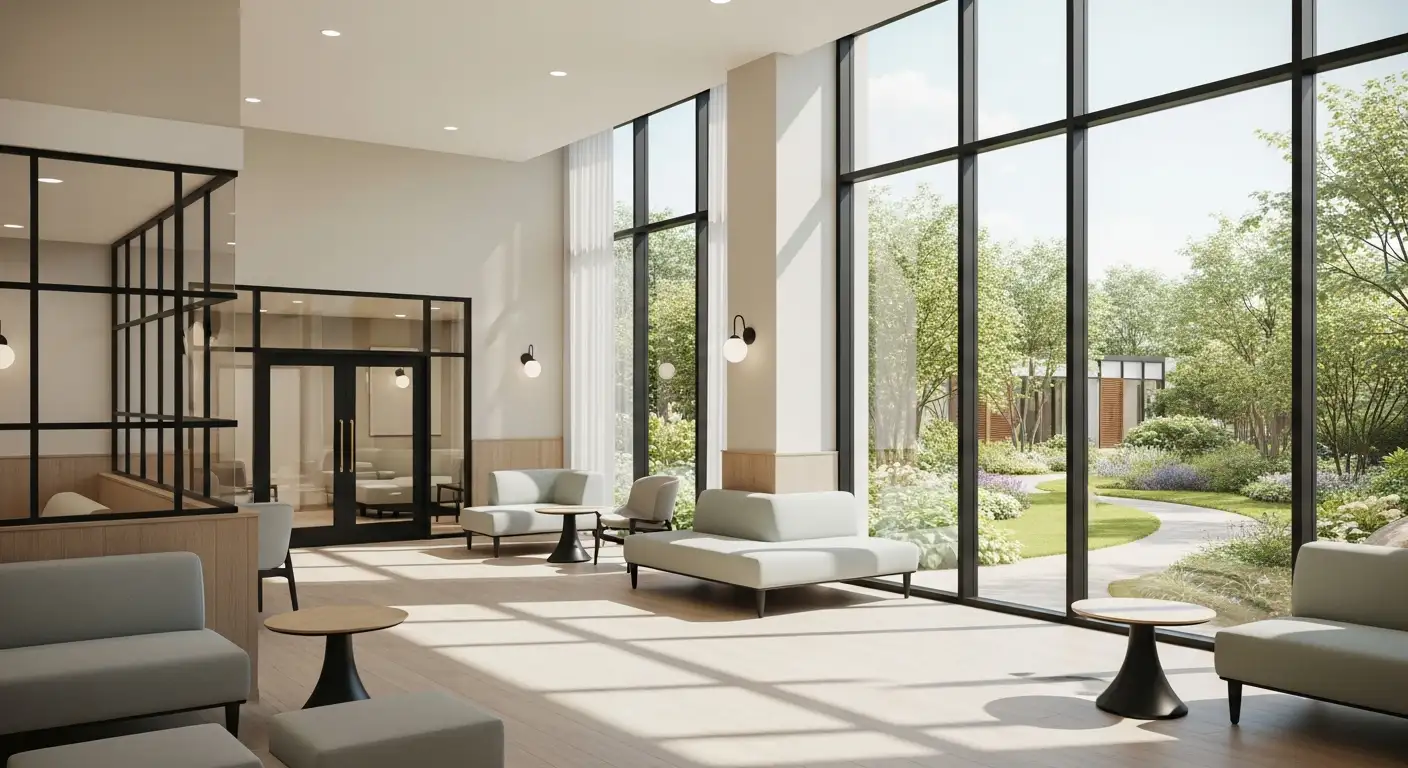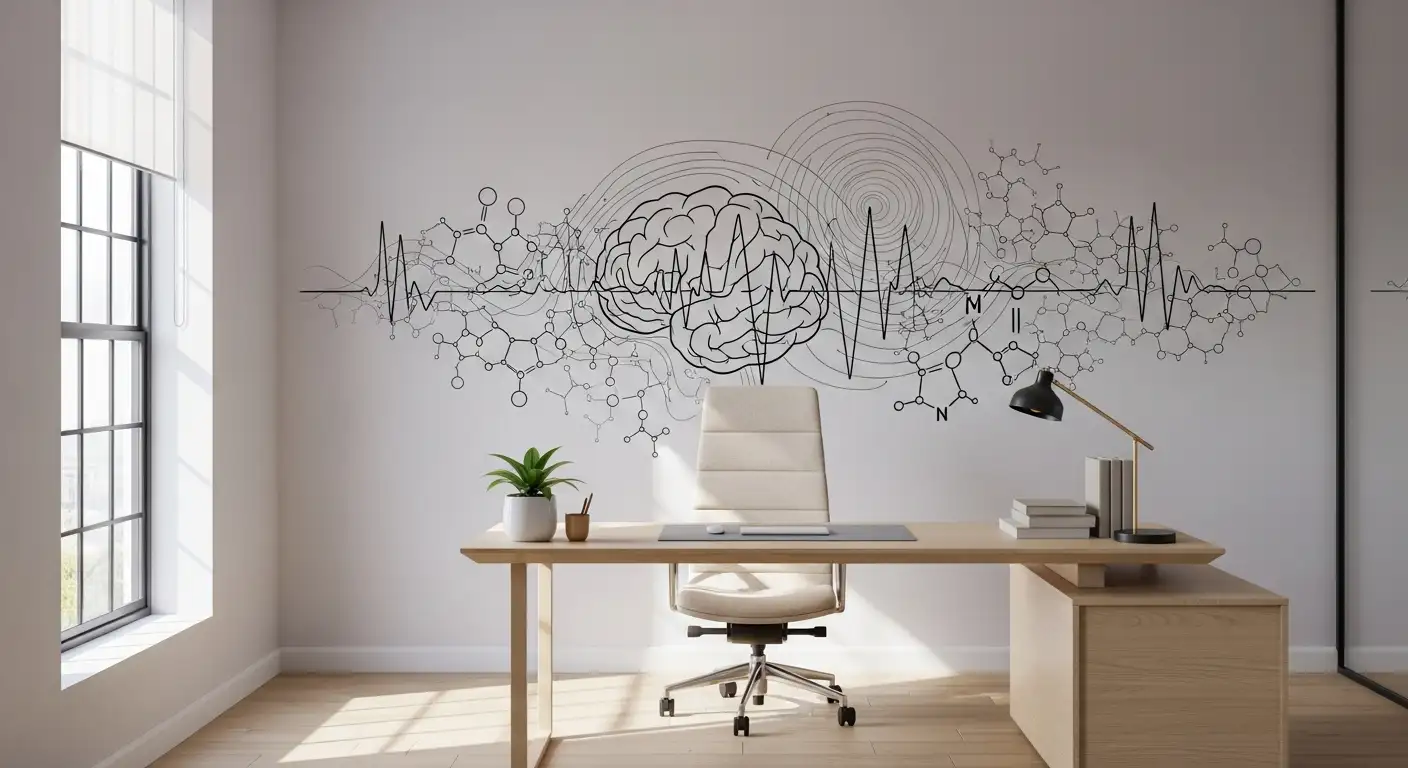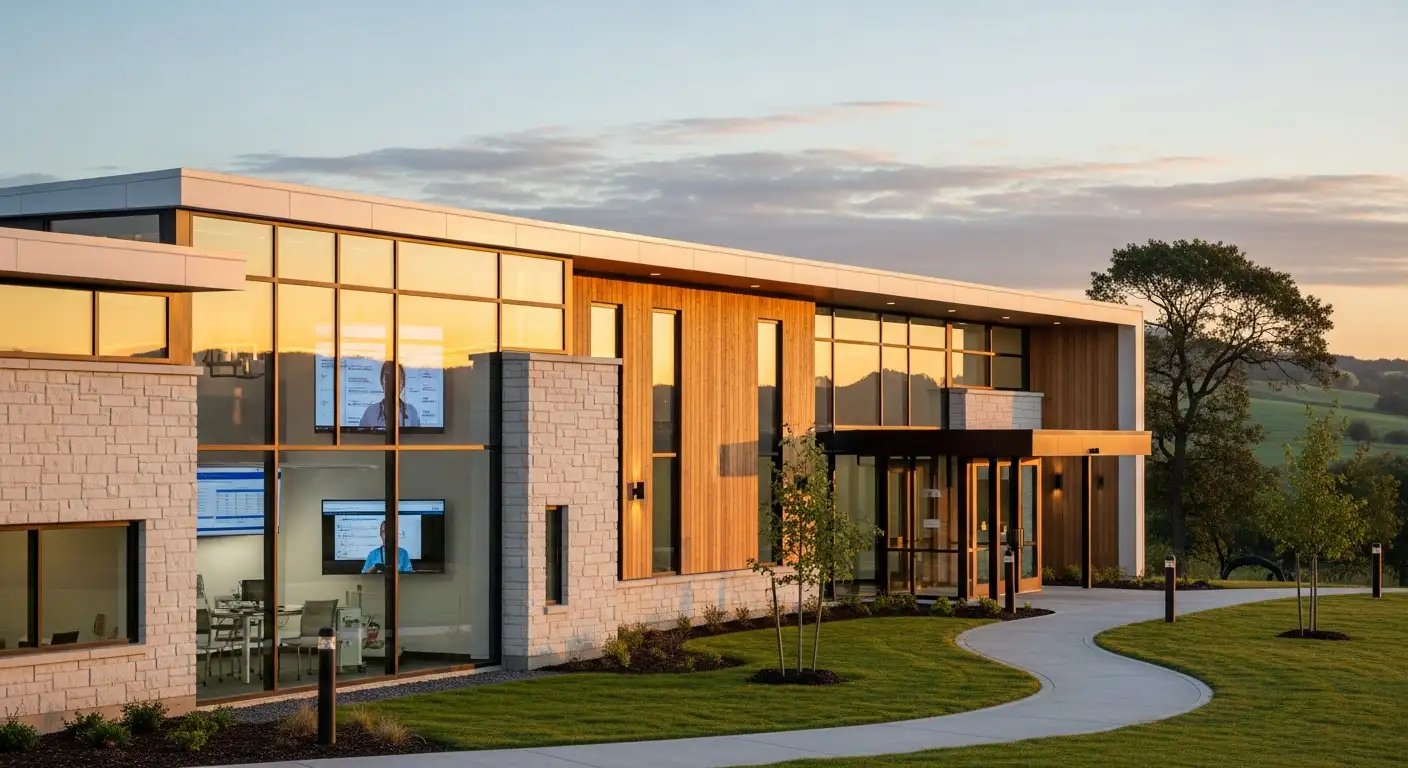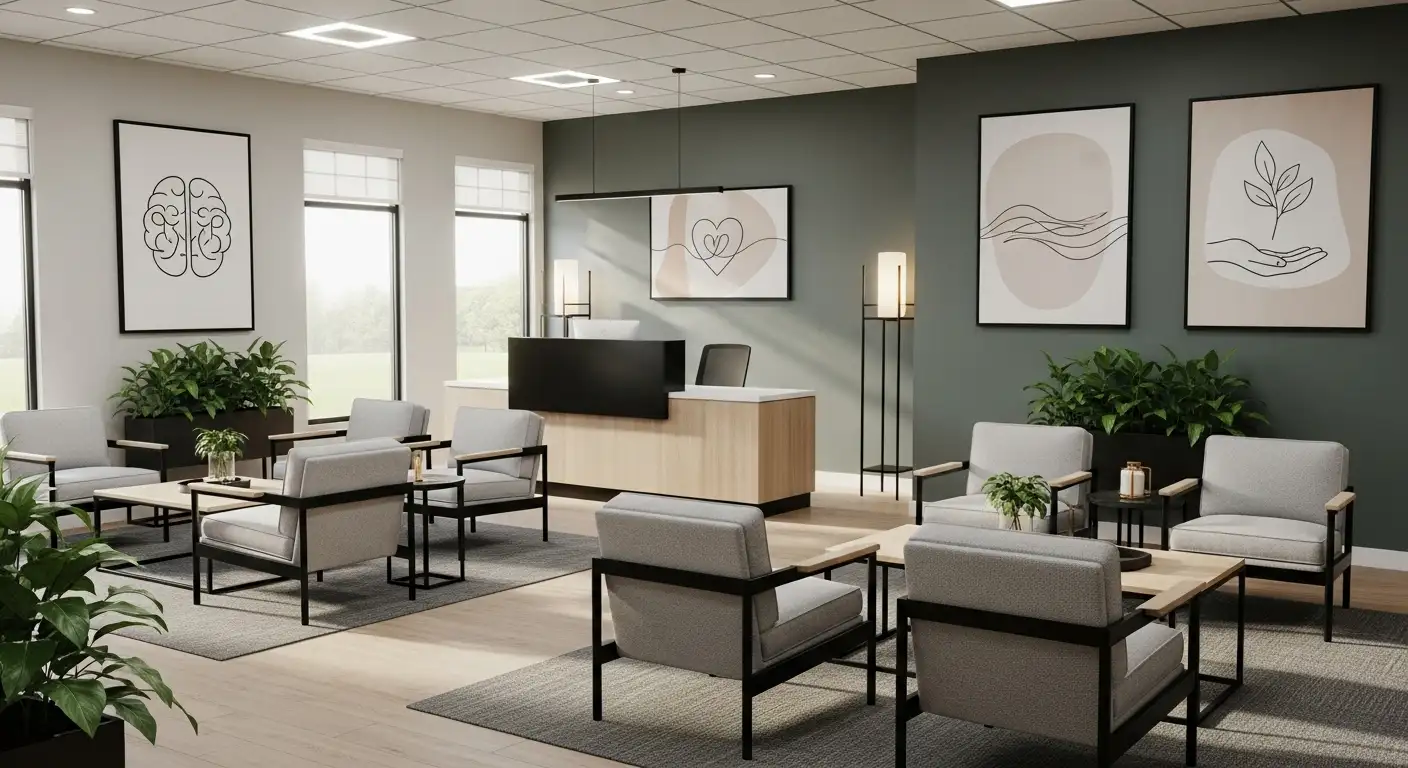Understanding Reminiscence Therapy
Reminiscence therapy (RT) is a psychosocial intervention that leverages the power of personal memories to promote psychological well-being among seniors experiencing cognitive impairments. This therapy involves revisiting past experiences through a variety of prompts such as photographs, music, and personal memorabilia, aiming to stimulate reminiscence, enhance mood, and reinforce a sense of identity. Widely used in care homes, community settings, and individual homes, RT offers a non-invasive, cost-effective approach to support emotional and cognitive health, particularly for those with dementia and Alzheimer's disease.
Definition and Core Techniques of Reminiscence Therapy

What is reminiscence therapy and how is it used for seniors with cognitive impairment?
Reminiscence therapy (RT) is a psychosocial intervention designed to help individuals, particularly seniors with dementia or other cognitive impairments, recall and share their past experiences. This therapy involves discussing personal memories through prompts such as photographs, music, personal objects, and familiar scents. Its primary goal is to evoke positive memories and foster meaningful conversations, which can support emotional well-being, reduce depression, and enhance social interactions.
RT can be adapted for individual, group, or family settings and is implemented both in care homes and community environments. It employs a multisensory approach, engaging sight, sound, touch, smell, and taste to stimulate different memory pathways. Techniques often include storytelling, life reviews, and the sharing of personal histories, encouraging participants to reconnect with their identities and life stories.
Research shows that reminiscence therapy can lead to small improvements in cognitive function, especially in recalling long-term memories, and can significantly boost mood and communication skills. While effects tend to be modest and vary by setting and delivery method, RT remains a valued non-drug treatment option. Its gentle, personalized approach makes it accessible and effective in supporting the psychological needs of seniors experiencing cognitive decline.
Techniques such as visual, auditory, tactile, and olfactory stimuli
Reminiscence therapy strategically utilizes various sensory stimuli to evoke memories. Visual aids like old photographs, keepsakes, and familiar objects serve as powerful memory triggers. Auditory stimuli include playing familiar music, songs, or sounds linked to personal experiences, which can evoke vivid memories and emotional responses.
Tactile stimuli involve engaging with objects that have personal meaning, such as childhood toys, clothing, or household items from the past. These tactile experiences help reinforce long-term memories and provide comfort through physical connection.
Olfactory stimuli harness scents associated with significant memories—such as perfumes, cooking aromas, or fragrances from childhood—that can unlock deep-seated recollections and positive feelings.
Methods including storytelling, life review, and personal histories
Common methods within reminiscence therapy involve storytelling, where participants share stories from their lives, often prompted by visual or sensory cues. Life review sessions involve a structured reflection on personal histories, helping individuals piece together their life stories and reinforce their sense of identity.
Personal histories are documented through life story books or digital stories, preserving memories for both the individual and their families. These activities foster self-esteem, create social bonds, and promote a sense of fulfillment.
Through these techniques, reminiscence therapy harnesses the power of the senses and personal narratives to support mental health and preserve the personal history of older adults, enhancing their overall quality of life.
Scientific Evidence Supporting RT's Efficacy
 Research studies and systematic reviews consistently support the use of reminiscence therapy (RT) as a valuable non-pharmacological approach to improving psychological well-being for older adults, especially those living with dementia. Multiple randomized controlled trials (RCTs) and meta-analyses have demonstrated that RT can lead to positive changes in cognition, mood, quality of life (QoL), and social interaction.
Research studies and systematic reviews consistently support the use of reminiscence therapy (RT) as a valuable non-pharmacological approach to improving psychological well-being for older adults, especially those living with dementia. Multiple randomized controlled trials (RCTs) and meta-analyses have demonstrated that RT can lead to positive changes in cognition, mood, quality of life (QoL), and social interaction.
In particular, studies involving large samples—such as a review of 22 RCTs with nearly 2000 participants—show that RT’s effects, though often small, are beneficial. For example, there is high-quality evidence indicating a modest improvement in cognitive functions immediately after intervention, with a standardized mean difference (SMD) of 0.11. Improvements in communication, mood, and quality of life have also been observed, especially in care home settings.
The positive outcomes extend beyond cognition. RT has been shown to significantly reduce symptoms of depression, which is common among older individuals with chronic health issues and dementia. Systematic reviews and meta-analyses have found that reminiscence interventions can decrease depressive symptoms with a standardized mean difference of -0.38, indicating a meaningful reduction.
Enhancing individual self-esteem and fostering a sense of identity are other benefits frequently reported. RT often prompts meaningful and emotionally engaging recollections, which help in stabilizing mood and promoting feelings of happiness and fulfillment.
The therapy employs various sensory cues—visual objects like photographs and keepsakes, auditory stimuli like music, olfactory cues such as familiar scents, and tactile items—that evoke long-term memories. Such prompts are effective in activating neural pathways associated with autobiographical memory, especially those developed during the 'reminiscence bump' period, roughly between 15 and 30 years of age.
In care environments like memory care units, RT is integrated into daily routines through activities like reviewing photo albums, engaging with memory prop boxes, and listening to familiar music. These practices support social bonds, reduce feelings of isolation, and improve overall emotional health.
Physiological measures support the cognitive engagement aspect of RT. For instance, EEG studies indicate that reminiscence sessions can elicit relaxation and mental alertness, marked by changes in alpha and beta wave activity, although such findings are more exploratory.
Furthermore, the safety profile of RT is well established; it does not cause harm and is suitable for a broad range of individuals, including those with advanced dementia. The therapy’s non-invasive nature facilitates its integration into various settings, such as homes, care facilities, and community centers.
While the overall evidence favors RT’s benefits, outcomes can vary significantly based on factors like individual health status, the format of the therapy (group versus individual), and the specific methods employed. Some studies recommend further high-quality research to better understand the scope and mechanisms behind RT’s effects and to optimize its delivery.
A summarized overview of research findings on reminiscence therapy is presented below:
| Aspect | Evidence | Additional Details |
|---|---|---|
| Cognitive Improvement | Moderate, small, immediate effect (SMD 0.11) | Observed more in care home settings |
| Depression Reduction | Significant, with a standardized mean difference of -0.38 | Especially in older adults, including those on antidepressants |
| Quality of Life & Happiness | Showing positive trends | Particularly effective when combined with sensory stimuli |
| Social Interaction & Engagement | Enhanced through group sessions | Promotes connection and reduces loneliness |
| Safety & Suitability | No significant risks | Suitable for diverse populations and settings |
Overall, the body of scientific evidence endorses reminiscence therapy as a safe, supportive, and effective tool for promoting mental health and well-being among elderly individuals with cognitive impairment. Nevertheless, ongoing research aims to refine intervention protocols and evaluate long-term effects, emphasizing its role as a complementary approach alongside other therapeutic modalities.
For further detailed insights, explore research findings on reminiscence therapy for seniors with dementia through current academic and clinical literature, which continues to expand on its applications and outcomes.
Implementation Settings and Practical Application
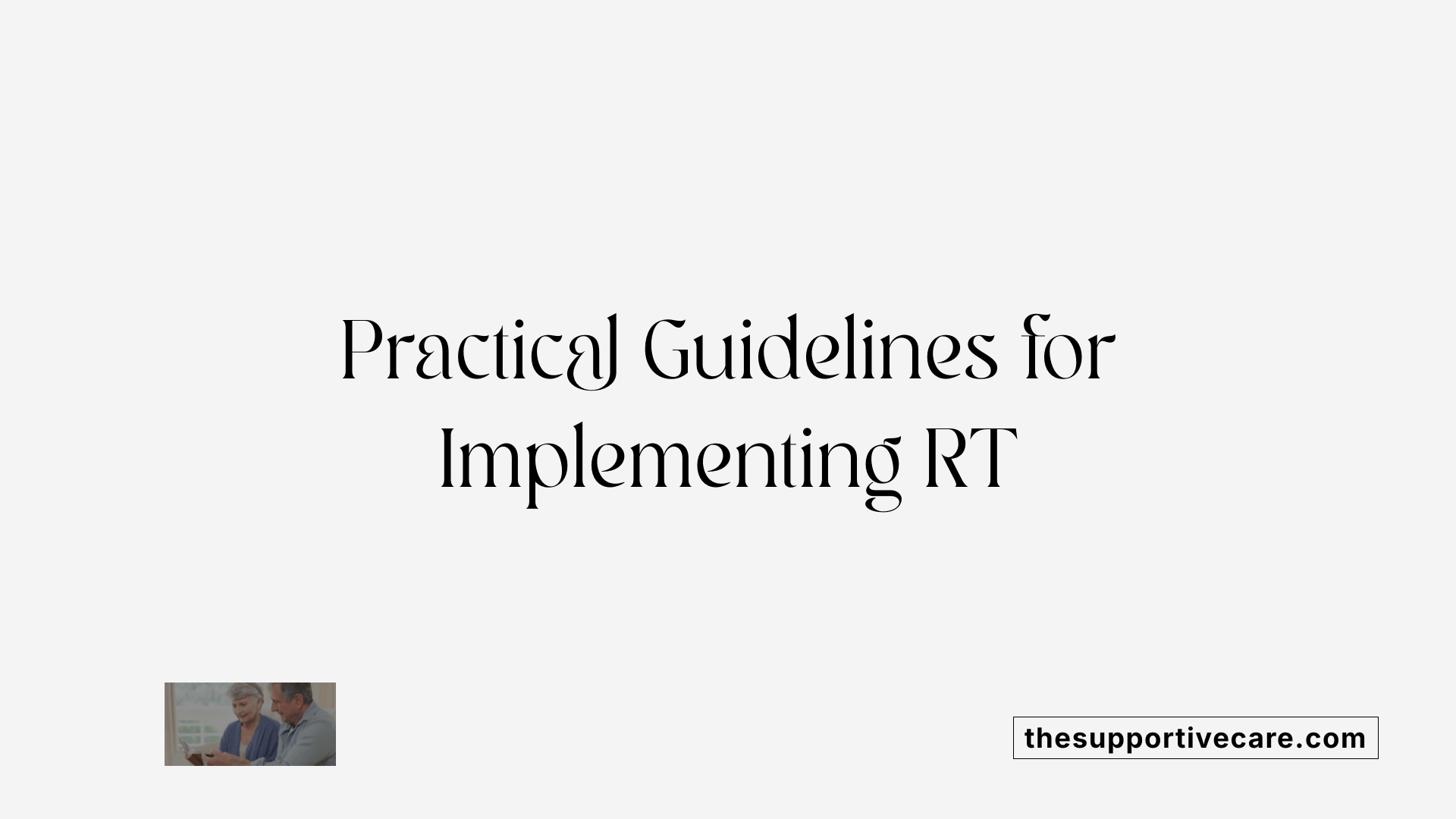
In what settings can reminiscence therapy be effectively implemented, and what are some practical guidelines for practitioners?
Reminiscence therapy (RT) is highly versatile and can be effectively carried out across diverse environments that support a relaxed, welcoming atmosphere. Common settings include care homes, community centers, and even private homes, where individuals feel safe and comfortable discussing personal memories.
In care homes, RT is often integrated into daily routines, offering scheduled sessions that encourage social interaction and cognitive stimulation. Community centers may host group reminiscence activities for older adults, often facilitated by trained staff or volunteers. For private homes, family members can engage in reminiscence activities, fostering bonds and promoting emotional well-being.
RT can be delivered in group, individual, or family sessions. Group sessions typically consist of five participants with similar cognitive levels to facilitate meaningful conversation without becoming overwhelming. Individual sessions are tailored to personal histories, allowing a more focused and emotionally meaningful experience. Family sessions serve to strengthen relationships, involving loved ones in the sharing and recollection process.
Practical guidelines for effective implementation include:
- Tailoring activities to each person's personal history and preferences, emphasizing topics and stimuli that hold emotional significance.
- Using sensory prompts like photographs, music, scents, tactile objects, and familiar foods to trigger vivid memories across senses.
- Creating a soothing environment free from distractions, with comfortable seating arrangements that encourage open conversation.
- Utilizing relevant themes aligned with the individual’s past experiences, such as childhood memories, past occupations, or cultural traditions.
- Encouraging open-ended conversation, avoiding direct questions that might cause frustration, and instead focusing on broad, emotionally engaging topics.
- Incorporating modern technology such as digital photos, music playlists, and reminiscence-based apps to enrich the experience.
- Providing staff and caregiver training to ensure they understand facilitation techniques, sensory cue usage, and ways to foster positive emotional responses.
- Scheduling regular sessions, typically once a week for 30-35 minutes over at least 12 weeks, to maintain engagement and allow for memory consolidation.
These guidelines foster an environment where reminiscing becomes a positive, emotionally enriching activity that enhances psychological well-being and social connections, regardless of the setting.
Mechanisms of Action and How RT Supports Cognitive Decline

How does reminiscence therapy work to support seniors experiencing cognitive decline?
Reminiscence therapy (RT) supports seniors with cognitive decline by tapping into their long-term memories, which are often more preserved than recent memories. It encourages recalling personal past experiences through meaningful discussions that leverage visual, auditory, tactile, olfactory, and gustatory stimuli.
The therapy involves using sensory prompts like photographs, music, familiar objects, and scents, which act as triggers for autobiographical memories. These prompts stimulate long-term memory pathways and engagement, activating associated neural networks in the brain.
Neuroimaging studies and physiological measures provide insight into the brain activity associated with RT. For example, EEG recordings have shown increased alpha and beta wave activity during reminiscence sessions, indicating relaxation and heightened cognitive processing.
RT stimulates brain areas involved in memory and emotion, such as the anterior cingulate cortex, which helps with emotional regulation, and the inferior temporal gyrus, associated with visual object recognition and memory. Activation of these areas helps reinforce residual cognitive abilities and preserve a sense of self.
Focusing on emotionally meaningful and positive memories, RT fosters emotional well-being and social connection. This emotional engagement not only enhances mood but also improves motivation for cognitive activities.
Furthermore, by reconnecting seniors with their personal history, RT promotes feelings of identity and continuity, reducing feelings of confusion and depression often present in cognitive decline. It provides a safe space for reminiscing, which can decrease behavioral and psychological symptoms.
Overall, reminiscence therapy works on multiple levels—stimulating neural pathways, engaging emotional and cognitive centers, and fostering meaningful social interactions—making it a valuable supportive approach for aging individuals experiencing cognitive challenges.
Integrating RT into Daily Life and Care Practices
At-home practices
Implementing reminiscence therapy (RT) at home can be a meaningful way to maintain cognitive and emotional well-being in older adults. Simple activities like exploring family photo albums, listening to favorite music, or cooking cherished recipes help evoke positive memories. Using personal objects—such as childhood toys, old clothes, or souvenirs—serves as tangible prompts that stimulate recollection of past experiences.
Family members and caregivers can facilitate sessions by asking open-ended questions that encourage storytelling. For example, asking, "What do you remember about this place?" or "Can you tell me about your favorite childhood game?" helps foster engagement without causing frustration. Sensory activities, like tasting familiar foods or smelling scents associated with particular memories, further enhance the experience.
Incorporating into routines
RT can be integrated into daily routines seamlessly, making it a natural part of life rather than a separate activity. For instance, during mealtime, caregivers might incorporate familiar foods and encourage sharing stories related to dishes or food traditions. During evening walks, visiting places of personal significance or reminiscing about past travels can reinforce long-term memories.
Establishing regular weekly sessions—such as sharing stories on a set day or creating a family tradition around listening to old songs—can foster a sense of routine. Engaging in collaborative activities like making a family scrapbook or creating a memory box encourages active participation and reinforces personal identity.
Use of technology and personal objects
Digital tools and applications designed for reminiscence can augment traditional practices. For example, digital photo frames that display curated images from the past, or memory apps that compile music, videos, and stories, can make RT more accessible and engaging.
Personal objects remain powerful stimuli; caregivers should gather meaningful items like medals, medals, old letters, or fabric from favorite clothes. When used thoughtfully, these objects can evoke rich memories and facilitate storytelling.
In memory care communities, technology such as reminiscence apps and virtual reality experiences can simulate familiar environments, aiding recall and emotional connection. These tools can be customized to suit individual preferences, making reminiscence therapy a versatile addition to daily care routines.
Practical tips for successful integration
- Use broad, emotionally engaging prompts to avoid frustration
- Incorporate sensory stimuli such as music, scents, and tactile objects
- Engage in activities that respect the individual’s pace
- Collaborate with family and caregivers for consistent practice
- Record and document stories to preserve personal history
Overall, integrating RT into daily life enhances emotional stability, strengthens identity, and fosters social bonds, making it a valuable component of holistic care for those with dementia or age-related memory challenges.
Conclusion: Embracing the Past for a Better Future
What are the benefits of reminiscence therapy for cognitive function, emotional health, and overall quality of life in seniors?
Reminiscence therapy provides a range of positive effects for older adults, especially those with dementia or Alzheimer's disease. It actively stimulates memory and neural connections, supporting cognitive functions such as memory recall and mental vitality. Studies show that it can produce small but meaningful improvements in cognition immediately after the therapy sessions and at follow-up points.
Emotionally, reminiscence therapy helps individuals process their past experiences, fostering feelings of happiness and self-worth. It has been demonstrated to significantly reduce symptoms of depression and anxiety, improving overall mood and emotional stability. Sharing memories also enhances communication skills and helps strengthen bonds with caregivers, family members, and peers, reducing feelings of loneliness and social isolation.
Regarding quality of life, reminiscence therapy can promote a sense of achievement, joy, and identity. By recalling positive experiences, individuals often report increased life satisfaction and a better outlook on daily life. Some evidence suggests that it may even contribute to better heart health due to reduced stress levels.
Why is personalized reminiscence important?
Because each person's life story, preferences, and memories are unique, tailoring reminiscence activities to the individual enhances their effectiveness. Using familiar props, music, or photographs related to personal histories helps evoke more vivid and meaningful memories. Personalized sessions foster a deeper emotional connection, making the experience more impactful and enjoyable.
Caregivers and therapists should consider the individual's background, interests, and cultural context to design engaging and respectful reminiscence exercises. For example, incorporating favorite songs, past occupations, or family stories maximizes engagement and positive emotional responses.
What is the need for ongoing research and practice improvements?
While existing evidence affirms the benefits of reminiscence therapy, further high-quality research is essential to expand understanding of optimal delivery methods, session frequency, and long-term effects. Technological advancements, such as digital reminiscence tools, offer promising avenues for enhancing engagement and accessibility, especially in remote or home settings.
Additionally, improving training for caregivers and healthcare providers ensures that reminiscence activities are conducted effectively and safely. Continued research can also identify the best ways to integrate reminiscence therapy with other treatments, like occupational or music therapy, to maximize benefits.
By investing in rigorous studies and innovative practices, we can ensure that reminiscence therapy remains a valuable component of holistic care for older adults, supporting emotional well-being, cognitive health, and preserved identity.
| Aspect | Details | Additional Notes |
|---|---|---|
| Benefits | Improvement in cognition, mood, emotional stability, social bonding, quality of life | Based on multiple RCTs and meta-analyses |
| Techniques | Use of photos, music, personal objects, sensory prompts | Tailored to individual preferences |
| Settings | Care homes, community, at home | Flexibility according to needs |
| Future Directions | Digital tools, caregiver training, integrated therapies | Focus on accessibility and personalization |
The Power of Memory and Connection
Reminiscence therapy harnesses the beneficial power of personal memories and sensory engagement to support seniors facing cognitive challenges. While recent research underscores its potential in improving mood, social interaction, and quality of life, the therapy’s true strength lies in fostering a sense of identity, belonging, and emotional resilience. Implemented thoughtfully across care and community settings, RT remains a vital tool for enhancing the well-being of older adults. As scientific understanding evolves, ongoing research and personalized approaches will continue to maximize its positive impact, emphasizing the enduring value of connecting with one's past to enrich the present.
References
- Reminiscence therapy for dementia - PMC
- Reminiscence Therapy For People With Dementia
- What Is Reminiscence Therapy for Dementia?
- Effects of Reminiscence Therapy on Cognition, Depression ...
- Reminiscence Therapy for Dementia Patients
- How Reminiscence Therapy Works
- The effectiveness of reminiscence-based intervention on ...
- Benefits of Reminiscence Therapy
- Reminiscence Therapy for Dementia Patients





